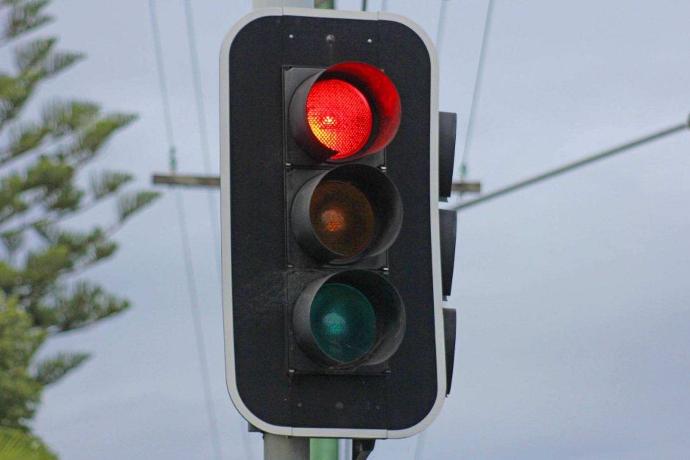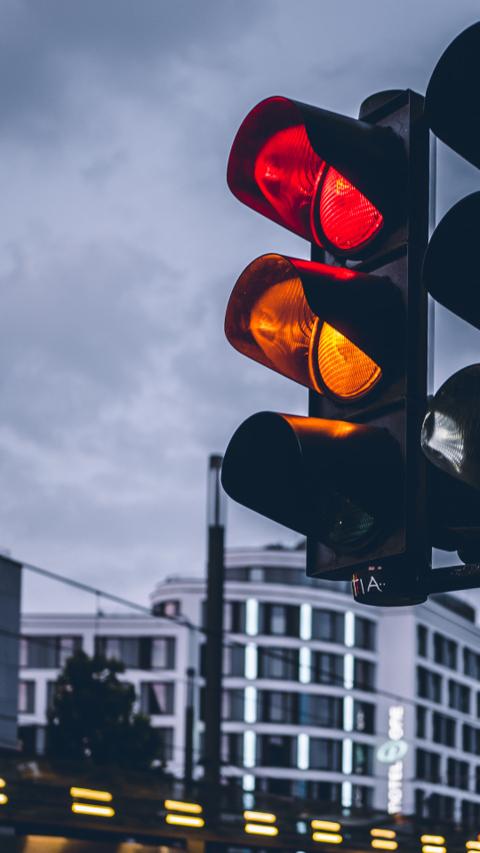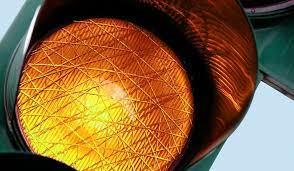When do I stop and when is it ok to go?

RED
Red means stop. Wait behind the stop line. Do not go through the intersection.
Simple to understand.

GREEN
Green means proceed through the intersection carefully.
Fairly straight forward

AMBER
Yellow/amber means stop. You can enter the intersection if you are so close that sudden braking might cause a crash. This is the challenging one for learners.

You need to stop before the stop line at a red light and go when the light is green. The hard part is knowing when do I stop at a yellow light. Simply put yellow means STOP if safe. So what makes it safe to stop?
We should all be looking well ahead of where we are while driving this way we have plenty of time to react to changes in the road conditions before we arrive at them. Don't wait until the lights change to decide if you should stop, we need to be making the decision on stopping or going while the light is still showing green. When you first see the lights, this should be well ahead of where you are at this point if they are green you may consider them to be 'stale' and ready to change at any moment. The way to deal with this is to anticipate the point of no return a point at where you are unable to stop on red.
Firstly, always reduce your speed when approaching traffic lights. This may mean taking your foot off the accelerator. If there is a car behind, the driver will be made aware by your action. By reducing speed slightly, your braking distance is reduced considerably. As you approach the green light, look for the stop line on the road that is associated with the traffic light you are approaching.
Scanning the stop line you will be able to estimate where the point of no return is on the road. Once this point has been identified, then your decision to stop or continue on when the yellow light appears will already have been worked out. Also, by checking your rear vision mirrors you will have information on how many vehicles there are behind you, and how close they are following.
This information is useful should the light turn yellow just as you have reached the point of no return. The closeness of the vehicles behind you will influence your decision to brake normally or more heavily. If the yellow light comes on before the point of no return, you know that you have enough time to stop. If the light comes on after you have gone over the point of no return, you can continue on - with caution.
This takes time to master, as always practice makes progress. Keep practicing in different conditions, different situation at various times and places. The more varied the scenarios you put yourself through with a supervisor to help when needed you will be more capable of making the right decisions when you're driving solo.
Receive 10% off your first 90 minute driving lesson when you book online. Use the coupon code 10%OFF when booking. Be quick the offer won't last forever. I look forward to seeing you soon.
Book now
Approaching traffic lights